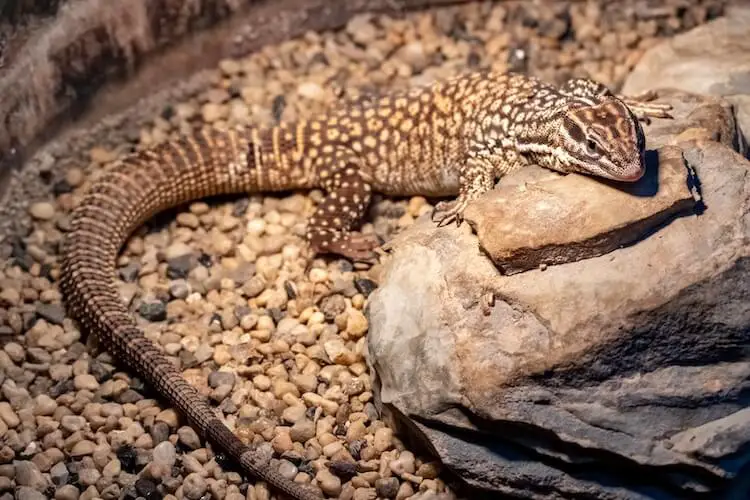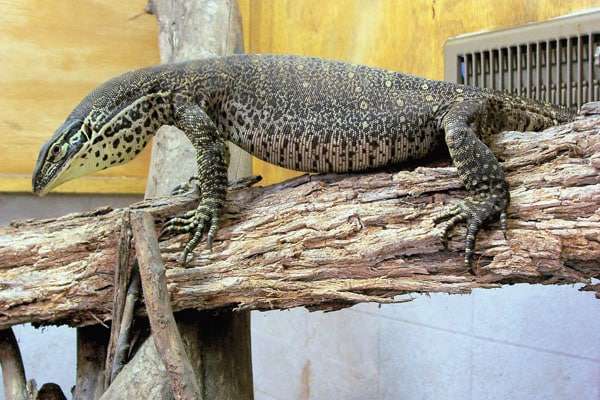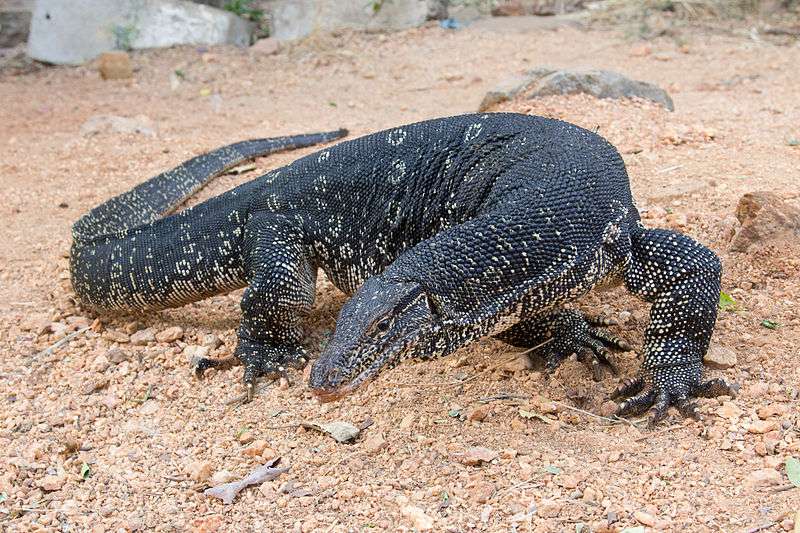
Description
Scientific name: Varanus acanthururs
Life span: 15-20 years
Ackie’s Dwarf Monitor is a medium-sized monitor lizard with an overall length of up to 70 cm, while there have been unverified reports of wild specimens attaining up to 34 inches. The length of the tail is roughly 1–2 times that of the head and body put together. The upper side is covered with vibrant yellow-to-cream patches that frequently enclose a few darker scales. It has a deep, dark brown color. It has a round tail with very spiny scales. It is also known as a spiny-tailed monitor and ridge-tailed monitor.
Native Region/Habitat
Ackie’s Dwarf Monitor can be found throughout northern Western Australia, the Northern Territory, and some regions of Queensland. They often find refuge in the crevices and cracks between the rocks as well as in burrows beneath them since they like arid, dry environments with plenty of boulders, rocks, and spinifex grass.

Behavior
Ackie’s Dwarf Monitor spends most of the day alone on the ground. The majority of the time, this species is present in or near its shelter, usually under or beneath rock blocks, stones, or fissures. Since it is less active than other monitor lizards and has a slower metabolism, it is more likely a sit-and-wait predator and is frequently spotted in its hiding place throughout the day.
Ackie’s monitors are incredibly smart and have curious lively personalities. They recall your identity and previous encounters with them. The temperament of Ackie’s monitors is generally favorable for captivity. Once they feel at ease with you, they should show no signs of aggressiveness. Ackie’s monitors will spend the entire day soaking up the sunlight and exploring their surroundings. You shouldn’t be shocked if you notice the lizard peering into the house through the glass because they are naturally curious animals.
Care As a pet/In captivity
It is an excellent pet for someone with the time and resources to care for them. When choosing an enclosure for Ackie’s monitors, bigger is always preferable. Adults require a tank that is at least 120 gallons in size, although juveniles can be housed in cages that are as tiny as 40 gallons since it makes them feel safer. They require a deep loose substrate to burrow. They also require a lot of plants, hides, logs, poles, and other things for climbing on and digging under. In their enclosure, they require a basking area with a temperature of 120 – 150°F. Air temperature on the cooler side should range between 80 and 85°F. They require a UVB light to process calcium as they are daytime lizards.
Table





